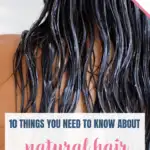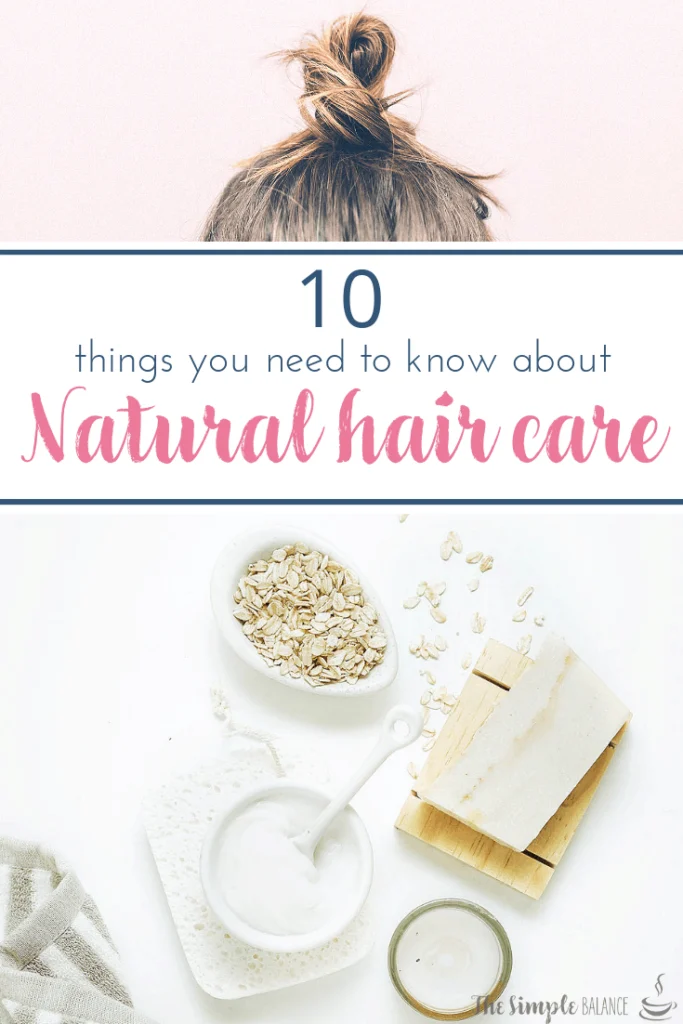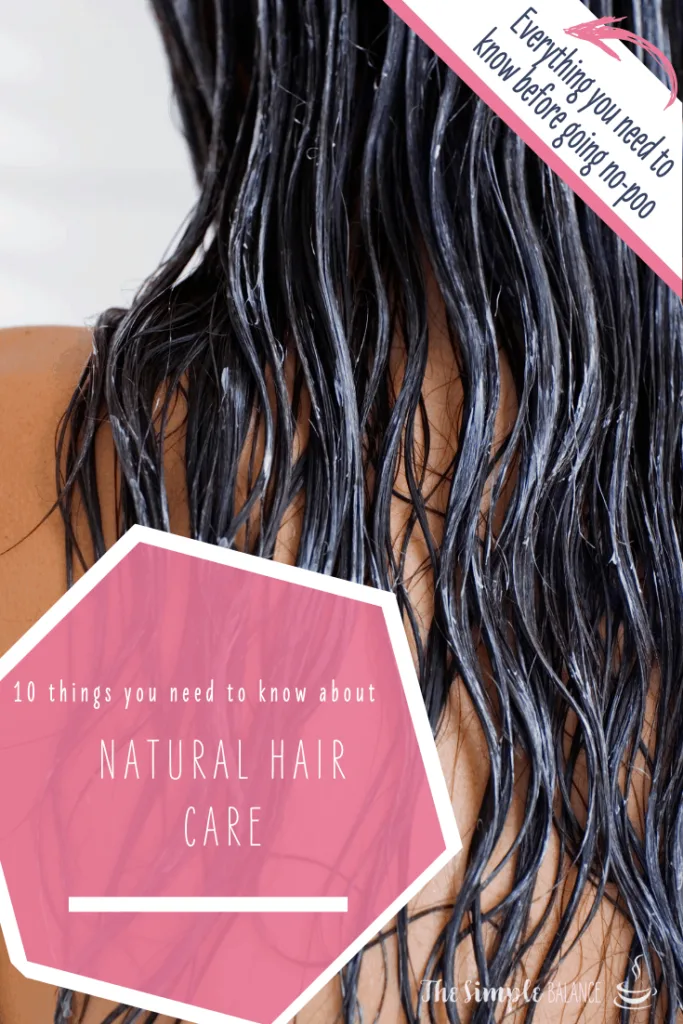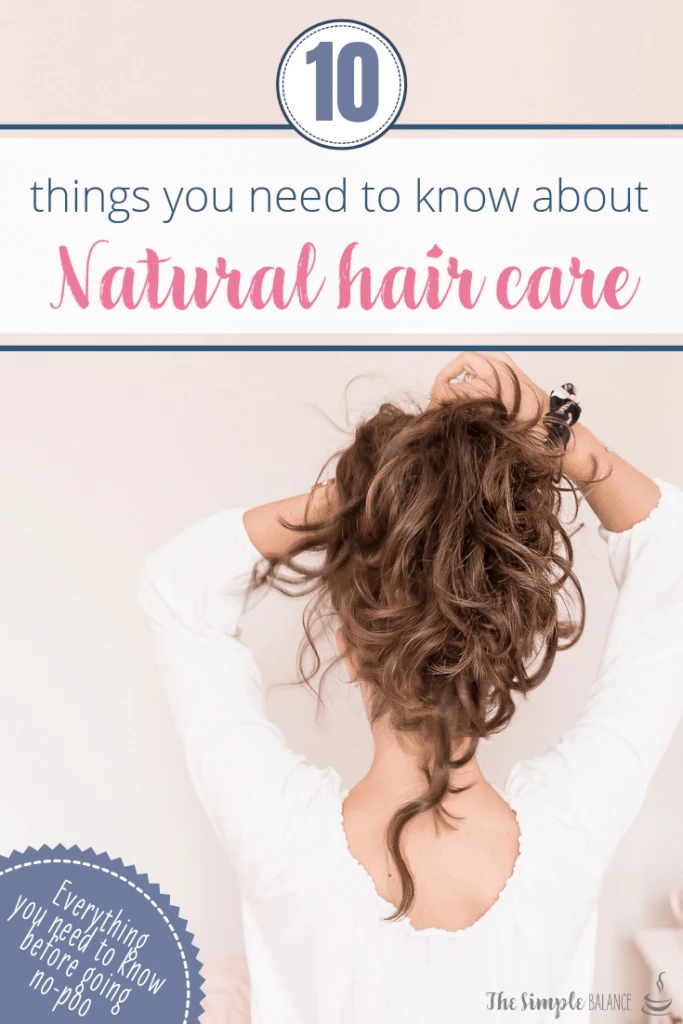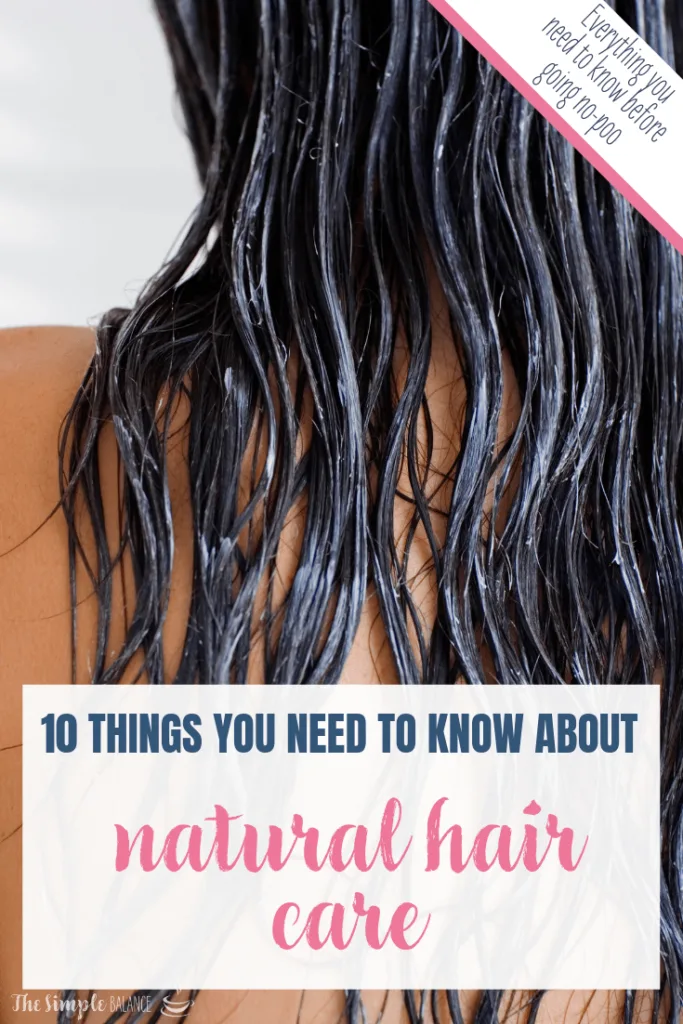Every thinking about going no-poo? There are 10 things you need to know before you dive in. In this article, I’m going to help you get your natural hair care off to a good start.
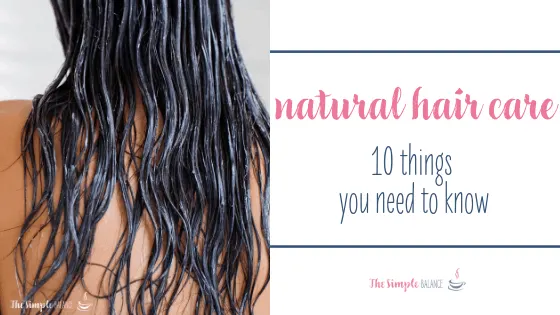
*This article contains affiliate links. That means that if you buy through any of the links marked *, I will receive a small commission at no extra cost for you. But you do have my promise: I only recommend what I personally like and find helpful.
It’s been three years since I started my last attempt at natural hair care. I’ve had several unsuccessful attempts. However, the condition of my hair made me want to give it one last shot. And now I couldn’t be happier!
My greasy hair required a wash at least every other day. Now I only need to wash my hair 4-5 times a month. My natural curls had almost completely disappeared and are back. And even without much maintenance!
Hair loss was my main reason for trying again, though. My fine hair was getting thinner and thinner. By switching to natural hair care, I got this under control.
But switching to natural hair care is not easy. So here are 10 tips you need to know to successfully start your own experiment.
#1 Figure out your reasons
I’m not a big fan of the fearmongering and scare tactics against chemicals. However, the main ingredient in regular shampoos – Sodium Lauryl Sulphate (SLS) – does seem to come with a few issues.
The most obvious problem is that this cleaning agent is pretty harsh. It completely removes the natural sebum from your hair and scalp. The body’s natural response is to produce more – resulting in increasingly greasy hair. Also, natural curls don’t seem to do too well with SLS.
Please note: Googling SLS and SLES (Sodium Laureth Sulphate) will result in tons of horror stories about the carcinogenic effects of both ingredients. As far as I know, none of them have been proven yet.
For more information, I recommend the following, balanced pages:
Myths and truths about SLS
SLS on Wikipedia
So, regardless of the debate around SLS/SLES – what is it that you want to achieve?
- Do you want to save money?
- Simply go back to a more natural hair care?
- Find a relief for hair loss, greasy hair, dry/thin hair or dandruff?
- Maybe to revitalize your curls?
- Wash your hair less often?
- Encourage hair growth?
- Or maybe just experiment and do a little shampoo DIY-ing?
Knowing your WHY is a much better motivator than then scary stories on the internet. And it will help you to persevere when your no poo journey gets difficult. Plus, it gets much easier to see whether you have reached your goal!
#2 Natural hair care doesn’t mean no foam
There are different ideas around what it means to go natural. For some it means going no poo – just washing their hair with water.
For others, natural hair care means using exclusively natural, non-foaming substances. Like flour, soap nuts, baking soda or volcanic ash. And then there are those who take a relaxed attitude and use everything that works without the sharp ingredients of most commercial products.
If you want to avoid SLS, you need to identify a long list of similar names on each hair product. Personally, I found this approach a little too complicated so I limited myself to the many everyday products fist. These methods take some getting used to, though, because of the lack of foam.
I wasn’t able to reach my goal with any of the non-foaming methods. So eventually I ended up with hair soap.
Note: At least in Germany, there is a difference between hair soap bars and shampoo bars. Hair soap is regular soap optimized for hair care. Shampoo bars usually contain regular shampoo ingredients.
#3 Your hair type matters
When going natural, there’s one thing to keep in mind: Every head is unique. Therefore, recommendations are generally of little use. Sure, there are characteristics such as smooth, curly, fine. But recommendations for “curly hair” can refer to both thin European hair with natural waves and natural frizzy African hair. Yet the needs of these two hair types could not be more different.
There are lesser known ways to find out more about your type of hair. How quickly does it absorb water? Is your scalp more oily or dry? This can help you look for recommendations that are more useful.
What I found really helpful is the following e-book by the Crunchy Moose. It made starting my no-poo journey incredibly easy:
The NoPoo Method by The Crunchy Moose*
So just remember: There may be people whose hair can be cleaned using water only. But that doesn’t mean it would work for everyone.
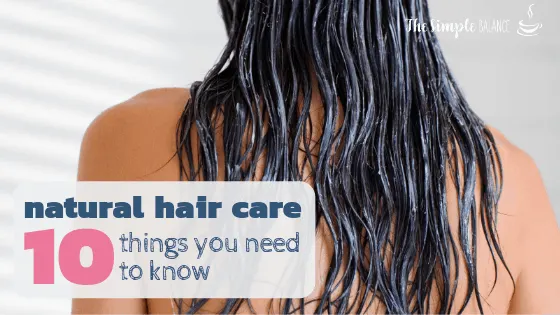
#4 Experimenting is key
It’s possible that you hit the jackpot at your first attempt and fall in love with your hair. In most cases, however, it takes more than one wash to see how your hair responds.
Actually, it might take quite a bit of experimenting with different ingredients and products until you find what works best for your hair.
See how your hair feels. Notice how you can incorporate the routine into your everyday life. And test how long you can go between washes.
General rule: If it doesn’t feel good, keep experimenting.
#5 It takes patience to try natural hair care
Compared to shampoo, some methods are very time-consuming. This may not be a problem while riding the first motivation wave. But in the long run, natural hair care shouldn’t feel like another chose.
Patience is also required to find out what works best. Several times I exclaimed enthusiastically “This is it!” Only to notice an itchy scalp or strawy hair later. That’s because it can take two weeks until you know whether it’s a keeper or not.
You can count on one thing, though: Your hair will let you know whether it’s happy or time to continue experimenting.
#6 The transition phase can be difficult
The first challenge on your way to natural hair care is the transition phase. Your scalp needs time to recover and find its natural balance again.
The resulting transition phase can last 4-12 weeks. And it will probably test your patience…
You may even need to wash your hair more often initially, while at the same time trying to go for as long as possible between washes.
This is where dry shampoo becomes your best friend.
If you have long hair, be prepared to wear it up or tied back a lot. If your job allows it, hair bands, scarves or hats could be helpful.
#7 You might have to wash your hair twice
The recommendation to wash your hair twice seemed like nothing but a sales strategy of shampoo manufacturers. In the meantime, however, someone gave me credible arguments for this approach:
The first wash removes dust, dirt and skin cells from scalp and hair roots. Only once this “layer” has been removed, the active ingredients of your cleaning substance can really get into the hair.
So: wash – rinse – wash – allow to sit – rinse.
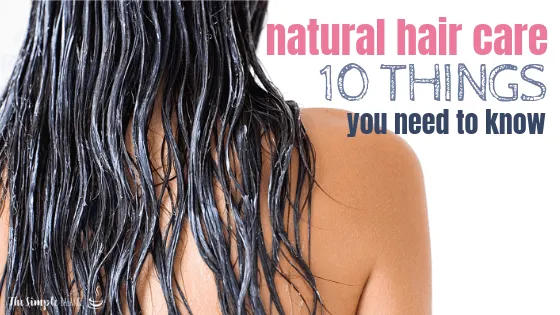
#8 You probably need a conditioner after every wash
Most shampoo alternatives only work if you also treat your hair with a conditioner. Fortunately, there are plenty of natural choices:
- diluted apple vinegar
- diluted lemon juice
- teas
- honey water
- fermented rice water
It makes a huge difference because it balances the ph of your hair: While your cleansing choice typically lowers the ph of your scalp, the conditioner raises it back to near-normal levels.
#9 Brushing your hair treats your scalp
Many followers of the no poo method swear by regular hair brushing. Not only because it helps your scalp find its balance again. It also helps to distribute the natural sebum from the roots to the tips. Thus, leaving your hair shiny and healthy.
Using a natural bristle brush, it’s recommended to brush your hair along the scalp for five minutes at least once a day.
But don’t invest a lot of money in an expensive, curved natural bristle hairbrush just yet. Experiment with a cheap alternative first to see if you like it.
Does it feel like a pleasant mini spa treatment for you? Then, by all means, go ahead and buy the Mercedes of all hair brushes. But feel free to skip it if, like me, you don’t like it.
Note: Natural curls should not be combed constantly. After washing, only carefully detangle your hair with a comb or your fingers.
#10 Self-care in natural hair care
On my own journey, there were long months when I didn’t see any breathtaking results. But I was slowly dreading the effort of washing my hair. That’s when I knew it was time to look for a solution more suitable for everyday use.
If you have little time to spare for body care, then go straight to the less complicated methods. This is also true if you just don’t want to invest a lot of time in it.
Maybe because showering isn’t that much fun for you. Or maybe you simply prefer to spend your free time with more pleasant things.
As long as you enjoy mixing, brushing and planning, you will certainly be happy with more complex methods. But as soon you start getting stressed by the process, switch to a simpler routine.
You might also be interested in this article:
37 Easy self-care tips for busy days
Bonus: Water hardness makes a difference
Mineral-rich water does not work well with natural hair care. And it can have a huge impact on how your hair turns out.
So, if you live in a hard water area, make your life easier by considering the following: Install a small water filter to your shower head. It’s not super expensive and could save you a lot of time, money and frustration.
Eyes on the prize
Whenever I was about to give up, I took a look at the alternative:
- having to wash my hair almost every day
- rearranging my hair so my hair loss was not visible
That was enough to spur me on and continue experimenting. It took almost two years, by the way.
But I’m so glad I didn’t give up.
So if you’ve been thinking about natural hair care, you may want to give it a shot. Perhaps with the help of The Crunchy Moose’s book*.
You might just end up with your most beautiful hair yet.
Ready to get more balance into your life? Sign up for my newsletter and gain access to my soon-to-be growing VIP area!

